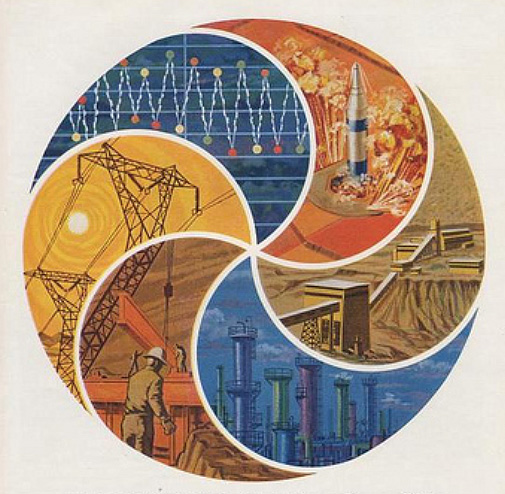Creating a Pinwheel Effect With Image Frames

Nowadays it seems like there’s an almost infinite supply of design inspiration at your fingertips with Behance, Pinterest, Flickr, Google Images, and of course, Twitter. A recent tweet from the official InDesign account shared the link to an awesome Flickr set of vintage science and tech ads from the ’50s and ’60s. And one of the ads that caught my eye included a set of illustrations in a sort of pinwheel effect.
I’m sure that the intent was to convey a sense of energy, progress, and the coordinated nature of the company’s diverse offerings (at least that’s the kind of stuff I would say if I were pitching the design). Anyway, I loved the retro feel of the ad and felt compelled to recreate it with InDesign. So here we go. To create the set of pinwheel image frames, start with a circle. Make sure it has no stroke and no fill.
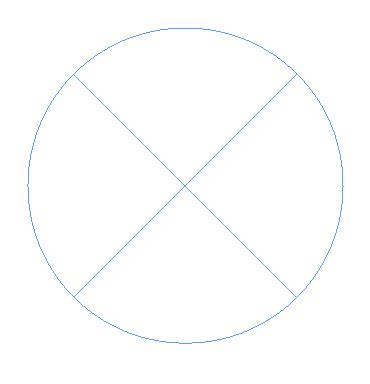
Copy and paste the circle in place. Set the reference point in the Control panel to the top center and scale the copied circle down to 50%

Switch the reference point to the bottom and double-click the Rotate tool. In the dialog box, rotate the circle 60° and click Copy.
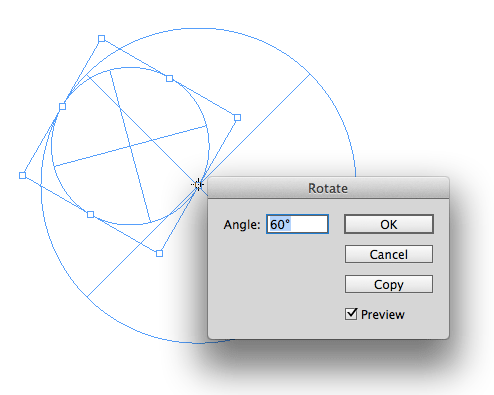
Now you have two overlapping circles that are half the diameter of the original.
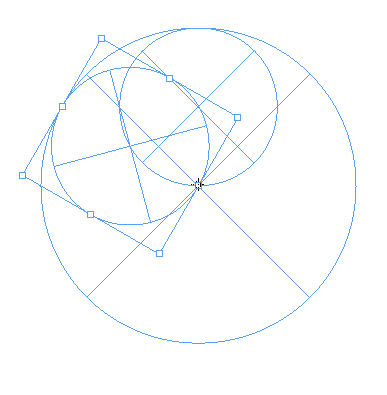
Copy the rotated circle to your clipboard. Select both the small circles and use the Pathfinder Subtract command so the rotated circle is punched out of the original small circle.
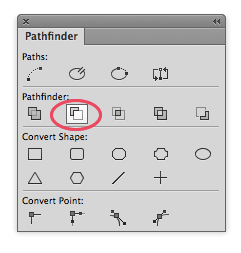

Choose Edit > Paste in Place to paste a copy of the rotated circle back into the layout. Select it and the large circle and again use the Pathfinder Subtract command.
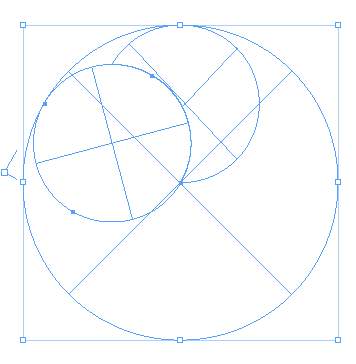
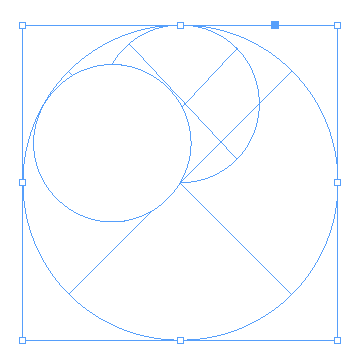
Now we have all the curves that we need to make one section of the pinwheel.
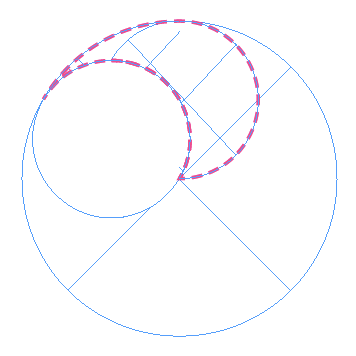
Next, we need to remove the parts that we don’t need. Use the Direct Selection tool to select the unwanted path points and segments and delete them. You should end up with a shape like this.
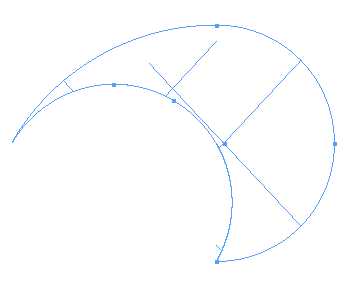
At this point, it’s not a single closed path, so it won’t look right if you place an image into it or apply a stroke. To make it a closed path, select overlapping points and use the Pathfinder Join command to unite the separate segments.
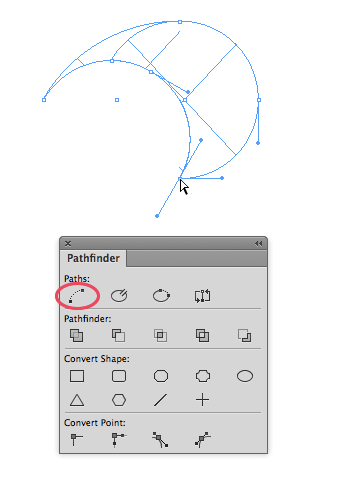
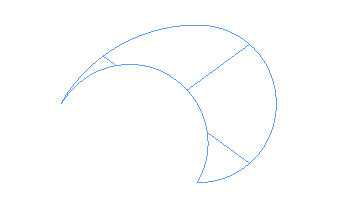
Zoom in on the bottom of the object. I mean WAY in, like 4000%. Switch to the Direct Selection tool so you can see the anchor points on the shape (but make sure all points are still selected).
Take the Rotate tool and click directly on the bottom anchor point of the path. This will set that axis around which the shapes will rotate, and it has to be just about perfectly on that anchor point, so take your time and click carefully.
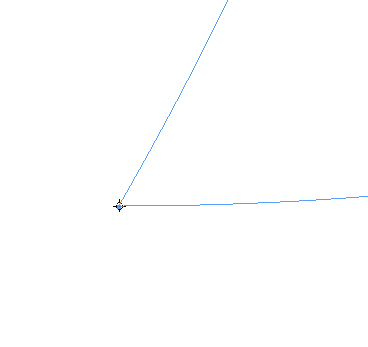
Double click the Rotate tool and enter a value of 60° and click Copy.

Choose Object >Transform Again > Transform Sequence Again (or press Command+Option+4/Ctrl+Alt+4) repeatedly until you have a complete set of rotated shapes.
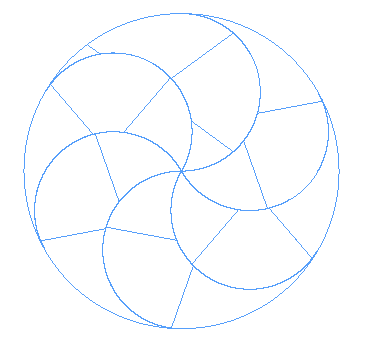
Now you can fill each shape with an image or color, and stroke with the same color as the background, if you want to match feel of the original ad.


You can also customize this effect by uniting some of the shapes to make things like a yin-yang, or even the Mac’s spinning cursor/wheel of death.
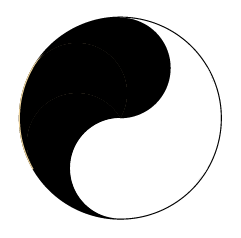

For over 100 more cool effects like these, check out my lynda.com course, InDesign FX.
This article was last modified on July 25, 2019
This article was first published on August 12, 2014




